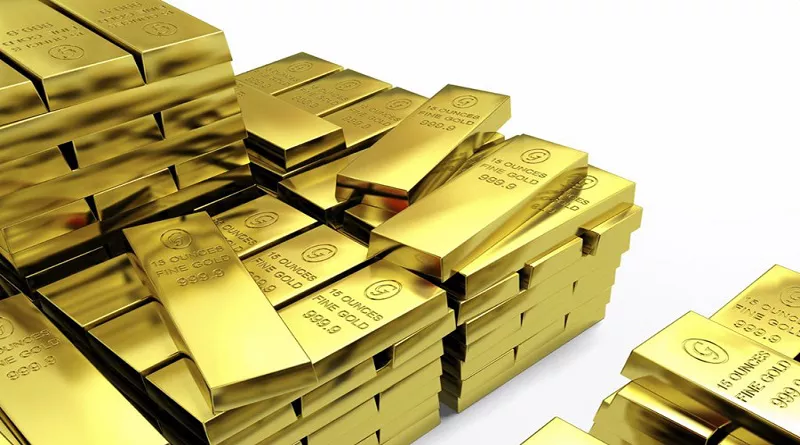SHANGHAI, September 15: Shanghai gold prices scaled yet another peak on Thursday, driving the cost of the precious metal to an unprecedented premium of $120 per Troy ounce above London rates in its primary consumer market. This surge coincides with China’s central bank’s recent easing of monetary policy, an attempt to counter the nation’s economic slowdown.
An article in the state-controlled Economic Daily cautioned domestic investors against following foreign capital outflows, labeling it an unsound investment strategy. This comes as the Chinese equity market continues its descent, with the CSI 300 index nearing a 9-month low, down nearly 1% on Thursday. Foreign investors have been offloading stocks, having withdrawn a record $12.5 billion last month.
The People’s Bank issued a warning to FX traders on Monday, urging them to avoid “disturbing” the currency market through speculative trades. These comments led to a rebound in the Yuan from its recent 16-year lows. However, they did not deter Shanghai gold from setting new record highs.
As spot gold in London approached $1900 per ounce, the Shanghai Gold Exchange’s PM benchmark auction earlier fixed at ¥474.58 per gram. This marks the fifth consecutive record high and is equivalent to $2029 per ounce.
The Shanghai premium, which has shown a median gap above London rates of 0.3% over the four years leading up to June 2023, has averaged 1.9% since July and reached a peak of 6.3% today.
John Reade, a strategist in the bullion market, remarked, “SGE volumes are decent but not outstanding. There appears to be a shortage of metal for purchase, potentially due to restrictions on bullion imports. However, the enthusiasm of buyers willing to pay a premium for gold has been truly astonishing. I’ve been monitoring the Shanghai Gold Exchange since its inception, and I’ve never seen movements like this.”
China, a dominant player in the gold market, is both the largest mining producer and household consumer. The country is also a central-bank buyer and net importer of gold. In July, China began curbing new gold import licenses, similar to actions taken in late 2016 to halt foreign currency outflows when the Yuan depreciated sharply on the foreign exchange market.
Data from the China Gold Association reported a 6.0% year-over-year growth in gold trading volumes on the Shanghai Gold Exchange for January to August. Meanwhile, trading in gold derivatives contracts on the Shanghai Futures Exchange surged by 37.0%.
However, Thursday saw the SHFE’s most active gold product, the December 2023 futures contract, peak at just under ¥472 per gram, more than ¥2 below the price established for physical bullion benchmarked at the SGE’s afternoon auction.
Analysts have revised down their growth forecasts for China, the world’s second-largest economy, to an average of 5.0% for 2023, marking the weakest performance since 1990, excluding the Covid Crisis of 2020. Factors contributing to this downturn include a slowdown in the property sector, reduced exports, US-China trade tensions, and shifts in supply chains away from China.
The People’s Bank in Beijing took measures to lower the percentage of depositors’ cash that commercial lenders must hold, marking the third such reduction in the past 12 months. This move brought the required reserves ratio to its lowest point since 2007, contributing to the ongoing streak of monetary stimulus that initiated Shanghai gold’s surge in mid-July.
Ahead of the release of key economic data for August, the People’s Bank stated that these measures would “consolidate the foundation of economic recovery and keep liquidity ample.”
Chinese data for August showed a surprising surge in commercial bank lending, led by mortgage loans. Despite ongoing debt troubles, plummeting sales, and halted construction projects among real-estate developers, rate cuts and policy easing in the property sector have boosted buyer sentiment.
In contrast, the European Central Bank raised its key interest rates on Thursday, reaching a record 4.0% per annum for the deposit rate. This decision, despite weak data from Germany, aims to combat inflation across the 20-nation eurozone.
New US data indicated a smaller-than-expected increase in initial jobless benefit claims for the previous week, coupled with stronger-than-forecast retail sales for August. These developments pushed the Euro lower on the foreign exchange market, boosting the EUR gold price to €1782 per ounce while nudging it closer to $1900.
In the UK, the gold price in Pounds per ounce remained around £1530, following a minor dip to a two-week low, £5 cheaper overnight.
Silver exhibited relative strength in currencies other than the Dollar but slid to four-week lows for US traders and investors, dipping below $22.50 per ounce.

